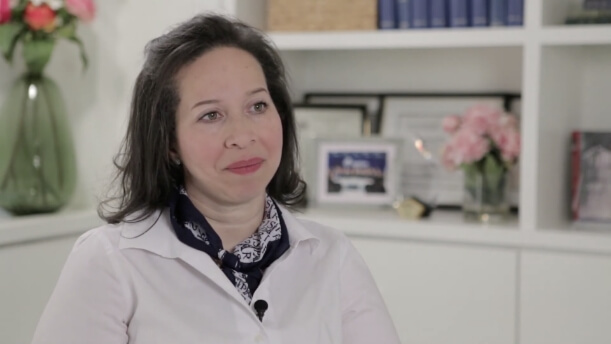
Understanding the Link Between Breast Implants and Anaplastic Large Cell Lymphoma (BIA-ALCL)
Just before the holidays, I ran into a colleague who is the chief of plastic surgery at a major cancer center in our area. He told me that 8 patients in the last 3 months had presented to him with anaplastic large cell lymphoma (ALCL) after breast reconstruction with breast implants. ALCL is a extremely rare cancer of the immune system, and questions have been raised about whether the incidence is higher in women undergoing breast reconstruction with breast implants. The incidence of ALCL in the breast is 3 cases of ALCL in 100 million women (0.000003%). In 2011, the U.S. Food and Drug Administration (FDA) first noted that the incidence of ALCL seemed slightly higher in patients with breast implants, but it was still very rare even in this population to the tune of 60 cases of ALCL worldwide in 5-10 million women (0.0006-0.0012%). At the time, many healthcare professionals believed that the incidence of ALCL in women with breast implants might have even been overestimated, because some of the data collected may have been duplicate cases.
In 2016, however, as data collection improved due to an increased attention to ALCL and breast implants, the World Health Organization (WHO) designated breast implant-associated anaplastic large cell lymphoma (BIA-ALCL) as a T-cell lymphoma that can develop following breast implants. Current literature estimates that BIA-ALCL may develop in 1 in 3,817 to 30,000 women with textured breast implants.
In chatting with my colleague, he stated that he was writing a paper on his findings about BIA-ALCL, and he believed that the incidence was closer to 1 in 400-500 patients with breast implants. A week after I spoke with him, news broke that France had issued a recall of textured breast implants due its association with ALCL. Given this, it is not difficult to imagine that the United States may follow in re-evaluating breast implant safety.
While attention has been focused on textured breast implants, BIA-ALCL has actually been found in all types of breast implants: textured, smooth, silicone, saline. As of 30 September 2017, the FDA had received 414 medical device reports of BIA-ALCL, including the death of 9 patients. Only 272 of the 414 reports included information on the implant surface. Of these cases, BIA-ALCL was found associated with 242 implants with textured surfaces and 30 implants with smooth surfaces. With regard to implant filling, BIA-ALCL was found associated with 234 implants filled with silicone gel and 179 implants filled with saline. About half of the reported cases were diagnosed within 7-8 years of breast implantation. Several recent journal articles explore risk factors for developing BIA-ALCL, including the role of biofilm. Of note, textured implants have significantly more surface area than smooth implants, which may explain why there is a higher incidence of BIA-ALCL in textured implants than smooth implants. That said, however, BIA-ALCL has clearly been found associated with every type of breast implant. Textured implants may be at slightly greater risk for ALCL than smooth implants, but findings are not conclusive. This is important to note because many plastic surgeons have stopped using textured breast implants, but they continue using smooth breast implants. It is clearly not true that BIA-ALCL is limited to textured breast implants only. Since every type of breast implant has been associated with BIA-ALCL, it is a false sense of security to limit breast implant use to smooth breast implants. In reality, all types of breast implants can lead to BIA-ALCL.
Furthermore, BIA-ALCL has been associated in women who have breast implants for both cosmetic and reconstructive reasons. Although my colleague believes that his experience with BIA-ALCL is due to his 25-year history of using textured breast implants to treat breast cancer patients undergoing breast reconstruction after mastectomy, there is currently no trend of implant reason associated with a smaller or greater risk of BIA-ALCL. Women who have breast implants for breast reconstruction due to mastectomy or for cosmetic breast augmentation are at equal risk for developing BIA-ALCL. The simple fact of having a breast implant – of any type, for any reason – in her body places a woman at higher risk of developing BIA-ALCL.
When ALCL occurs with breast implants, it is identified most frequently in patients undergoing implant revisions for late onset, persistent seroma (a fluid collection that develops around the implant), or other symptoms such as pain, lumps, swelling, or breast asymmetry. Any women experiencing these symptoms should see a plastic surgeon to be evaluated for BIA-ALCL. The FDA already recommends that women with silicone breast implants undergo breast MRI every 2-3 years to evaluate for silent rupture of her silicone breast implants. If a patient with breast implants is feeling a change in her breasts, breast imaging can also be obtained to evaluate for seroma. If a seroma is found, an interventional radiologist or a skilled breast radiologist can aspirate the seroma fluid to test for CD30 markers and lymphoma. If the cytology is positive, then the patient will need to be treated.
Treatment of BIA-ALCL includes removal of the implant and capsule surrounding the implant and, in some patients, treatment with chemotherapy and radiation. Indeed, my colleague stated that some of his patients with BIA-ALCL had presented with metastatic disease in which the cancer from BIA-ALCL had spread to other parts of the body. If ALCL is diagnosed through imaging and testing of the fluid around the breast, treatment is generally the surgical removal of the implant and the entire capsule that surrounds it. In its early stages, all traces of cancer are generally removed by surgery. Further treatment is necessary only if all the cancer could not be removed or if the disease has spread to the lymph nodes or other parts of the body.
The FDA does not currently recommend prophylactic breast implant removal in patients without symptoms or other abnormalities. At present, breast implants are still approved in the USA when used as labeled for breast augmentation or breast reconstruction, as the risk of ALCL is still considered to be small and inconclusive. All of this may soon change, however, as new and better data is collected on BIA-ALCL. In fact, my colleague believes the reason the numbers for BIA-ALCL have been low is that it is quite uncommon for plastic surgeons to check their patients with breast implants for BIA-ALCL, since it has only recently become a known entity. In December 2018, Allergan, one of the world’s largest manufacturer of breast implants, suspended sales of its textured implants in Europe after the implants were denied renewed safety certificates in France because of concerns about BIA-ALCL. The French regulatory agency and a British association of plastic surgeons have recommended the use of smooth-surface implants in place of textured-surface products. Both European regulators and the U.S. FDA will hold meetings in 2019 to review further the safety of all breast implants but for now, textured implants remain approved for use in the U.S.
In the meantime, women with breast implants who want to have their breast implants removed have options. A woman facing breast reconstruction after mastectomy may want to consider autologous reconstruction, in which a new breast is created from her own tissue. If she is not a candidate for autologous reconstruction or if she prefers implants, she must be aware of the risk of BIA-ALCL, discuss the benefits and risks of all implants with her doctor, and make an informed decision about what is best for her. A woman who had breast implants for cosmetic breast augmentation can have her breast implants removed and undergo natural breast augmentation or accept a smaller size breast. In short, even though breast implants of all types are still approved for use in the United States, any woman who has breast implants or is considering breast implants should be aware of BIA-ALCL so that she can be fully educated and consider the potential repercussions of breast implants on her health and well-being.


